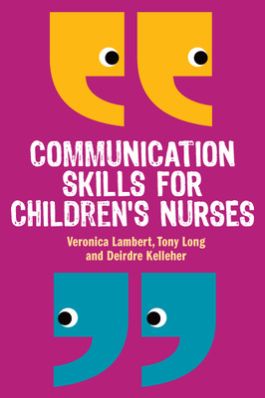Communication Skills for Children's Nurses
Chapter 2: Communicating with Children in Early and Middle Childhood
Chapter 3: Communicating with Young People
Chapter 4: Using Play and Technology to Communicate with Children and Young People
Chapter 5: Communicating with Parents of Children with Healthcare Needs
Chapter 6: Communicating with Siblings of Children with Healthcare Needs
Chapter 7: Communicating with Children and their Families during Sensitive and Challenging Times
Chapter 8: Communicating with Vulnerable and Disadvantaged Children
Chapter 9: Children who have Difficulty in Communicating
Chapter 10: Legal and Ethical Dimensions of Communicating with Children and their Families
Chapter 11: Communicating with Children and Young People in Research
Dr Edward Alan Glasper, Professor of Children's and Young People's Nursing, The University of Southampton, UK
"This is an important and much needed book. Logical and well presented, it has episodes of reflection which can be implemented, and activities that provide exemplars about communication that will enhance learning. I particularly found useful the chapters on the legal and ethical aspects, research and communicating with children using technology."
Linda Shields, Professor of Nursing - Tropical Health, James Cook University and Townsville Health Service District, Australia
This guide will help children's nurses tocommunicate with confidence, sensitivity and effectiveness; to meet the individual needs of children and their families. The book explores different aspects of communicating in this challenging environment using vignettes, examples, practice insights and tips.
The book emphasises the importance of listening to and respecting children’s views and rights, in addition to respecting parent responsibility, rights and duty to act in the child's best interests. The authors show how a balance between protective exclusion and facilitated inclusion is core to communicating with children and families.
Key topics covered include:
- Communicating during challenging and sensitive times
- The importance of being culturally sensitive and self-aware
- Meeting the needs of vulnerable and disadvantaged children
- Engaging with children who experience difficulty in communicating
- Ethical and legal dimensions of communicating with families
- Appreciating the nature of ‘voice’ in research with children

